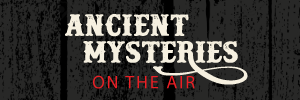Mar 30, 2022
Brad Bertelli joins us to talk about his recent book on the "Florida Keys Skunk Ape."
The Florida Keys Skunk Ape Files: Island Cryptids, Histories & Mysteries
Thanks Brad!
TRANSCRIPT
Please note we do not guarantee 100% transcript accuracy. The below reflects a best effort. Thank you for your understanding.
Jim Harold 0:03
Bigfoot, Nessie, Chupacabra. Are these and other purported monsters
the real deal, or are they really not more than a fantasy of those
who want to believe? We'll ask those questions on the Cryptid
Report.
Welcome to the Cryptid Report. I'm Jim Harold. And so glad to speak with you again. And we have a--it's gonna be a fun show, I think. Brad Bertelli is here. He is an author, columnist, speaker, and historian in the Florida Keys. He lives in Florida and curates the Keys History and Discovery Center. And we're so glad to have him with us. Brad, welcome to the show. And looking forward to talking about your book, the Florida Keys Skunk Ape Files: Island cryptids histories and mysteries.
Brad Bertelli 0:48
Thank you so much for having me on. I really appreciate the
opportunity.
Jim Harold 0:53
So as a historian, what made you want to do a book, and I
understand this is historical fiction, but inspired by an actual
sighting. What--what spurred you on to follow this idea of the
Skunk Ape?
Brad Bertelli 1:12
Well, this was one of--I wrote a column about this event, which
happened on Key Largo in 1977. And it was a very--it was a two week
event, it was--kind of got a lot of national exposure. It was
really interesting, the story. It was taken very seriously at the
time. And when I was doing a column--I've been doing a local
history column for a decade now here in the keys. And this was
probably the funnest column I ever did. And I wrote this a long
time ago. And while I was still curating at the Keys History and
Discovery Center, a job that I no longer have, I wanted to do a--a
exhibit on the Skunk Ape, I thought it would be great for, you
know, for kids, and a lot of fun. And again, based on this actual
event, and then my creative writing background and my history
background kind of got going and the book took off in a direction I
wasn't really expecting.
Jim Harold 2:13
(Laughs) I've heard fiction authors say that when you're writing
fiction, actually, sometimes the characters kind of determine the
direction it goes and they do things that you never intended them
to do, but say, "No, I'm not making a left around this corner. I'm
going to make a right around that corner." Was that your
experience?
Brad Bertelli 2:37
In a lot of ways, really, the book is three stories in one. There
are the cryptid events, there are 50 events that--that all revolve
around sightings of the skunk ape in the Florida Keys that date
back to the--to the 15th century basically. And there's
also--there's that--there are those stories, there's the historical
context where I take real live events that happened in the Florida
Keys, and I insert the Skunk Ape components and then (coughs)
excuse me, I created the southernmost skunk ape society, which is
the--a couple of a--couple of guys--a couple of kids in 1977
Keywest who find this--these two boxes of documents up in the attic
of a house that kind of document all of these sightings, and so the
third part of the story is the adventures of--of these two kids as
they explore the skunk ape files and they, you know, get involved
with the government. And so that portion of the story really did
take a life on of its own that I wasn't really sure where it was
going but, you know, as you do as fiction, you know, tends to
happen, the path goes where the path goes and you just go along for
the ride.
Jim Harold 3:59
So now Skunk Ape, for people who have heard that. That's basically
equivalent to kind of American southeast Bigfoot basically,
right?
Brad Bertelli 4:09
Yes, yes, Sasquatch, Bigfoot, Yeti. The skunk ape is sometimes
described as a smaller version of Bigfoot. But what was interesting
about the Key Largo sighting was the size of the creature who was
eight feet tall, which is typically a little taller than most Skunk
Ape sightings.
Jim Harold 4:32
And what's interesting when I would think of Key Largo, I'd be
thinking of beaches and beautiful vistas and things. I wouldn't
necessarily think of Skunk Apes or Sasquatch. But--but this
goes--you kind of touched on this. Could you talk to us, putting
your historian hat back on, how far back and how often these
sightings supposedly happened in real life?
Brad Bertelli 4:56
Well, you know, sightings of the Skunk Ape go back to the 1800s.
What was int--you know, what's interesting about a skunk ape
sighting on Key Largo and kind of what was part of the impetus for
the book was that if it happened once--and I believe the skunk apes
are real, and Bigfoot is real. I believe, you know, that if it
happened once, that wasn't the only time that a skunk ape was in
the Florida Keys. Historically, you know, panthers and bears have
been spotted on the islands and Key Largo being, you know, the
largest of the keys and relatively linked, not--no, it's close to
the mainland. It wouldn't be difficult for, you know, something,
you know, bears did it, panthers did it. Why couldn't--why couldn't
a skunk ape do it too? Make that crossing over to the keys.
Jim Harold 5:45
Now, when people reported seeing this skunk ape, was it threatening
in any way? What kind of behaviors would it--would it participate
in?
Brad Bertelli 5:58
It was, um, there was a father and son were out collecting bottles
along the edge of the island in the mangroves, which really,
generally, historically is, you know, kind of exploring the edge
and taking a long--a long pole and sticking it down into the muck
trying to tap glass. And as the father and son were down by the
edge of the islands, there was a strong smell, kind of described
as, you know, a dog that hasn't been bathed in months and months, a
wet dog, and then looking up ahead, they noticed something, you
know, wet and furry and large, kind of just--just up--up the way a
bit. And when it stood, you know, it was this man, this, you know,
eight foot tall creature. And it hung out around the property of
this family, the Hawkman's and um, it's, it will stay--stayed in
this area for about two weeks. And it scared the family, it did
come up to the house, tearing through the windows, the father cut
back the trees, 30 feet from the house hoping to, you know, to
deter it from approaching. But it didn't, you know, it wasn't
aggressive. It was just interested, I imagine, and kind of scared
and not sure what to do. It was also cited by another person who
lived nearby, kind of creeping beneath--taking shelter underneath a
shed. The police investigated. It was taken--it was taken very
seriously at the time.
Jim Harold 7:30
And is it a case like with this 77 rash--or 77 sightings? Was it
something where people would write into your column and write you
and say, "Hey, I saw that, too," was that very common?
Brad Bertelli 7:44
My column doesn't date back quite that far.
Jim Harold 7:47
No, but I mean, in later years, when they--when people--you said it
was the thing that people wrote into you the most? So did they say,
"Oh, 20, 30, 40 years ago, whatever it was, I saw that too." Did
you ever get anything like that?
Brad Bertelli 8:00
No. But the 70s is really interesting, because there was this
plethora of sightings between, you know, West Palm Beach, Fort
Lauderdale. Even in 1977, it also, you know, inspired a--a
politician from Cape Coral, who was in the, you know, in--a
representative of Cape Coral, who--who treated a skunk ape
protection bill that never actually passed.
Jim Harold 8:26
(Laughs)
Brad Bertelli 8:26
But in that bill, he does cite the sighting in Tavernier and Key
Largo. So it was taken seriously. People--I do get a lot of, you
know, one of the things about the book is that people read it, and
they think it's--and I take credit for this, because maybe, you
know, it took the writing is--
Jim Harold 8:46
Sure.
Brad Bertelli 8:47
--is well done, because people think it's real. And sometimes they
buy the book, they don't read the back cover, where it says it's
historical fiction, and they buy the book, and then, "hey,
this--this is not real." And it's the first line of the book, "this
is historical fiction." But people you know, don't--don't believe
that it's real, or think that it's real. And then they buy it and
say, "Hey, these are all kind of--something's not right here." But
I've not had the experience of people, you know, a few people do
contact. I have a you know, a Facebook page for the southernmost
skunk ape file--files, and a Twitter account. And every once in a
while someone does, you know, "Hey, I heard this," or, "there were
some helicopters out by my property the other night doing, you
know, kind of a, you know, a grid search and there was loud
howling," so there has been that. Occasionally, some people do.
And--and I, you know, it's an interesting relationship with people
who are really hardcore investigators, and then my book, some of
them don't like it because, you know, kind of playing both both
ends, you know, both the fiction and the--and the actual accounts.
So it's kind of interesting. The book is kind of positioned
interestingly.
Jim Harold 10:00
Well on that subject, how do you do that? I mean, in other words,
something that also, you know, obviously having a history
background, you want to be respectful to history. And you are very
respectful in saying upfront, it says it right there. I saw it in
the book, "this is historical fiction," but in terms of actually
writing it, how do you position where it's entertaining, it's fun,
but it is also respectful of the people who experienced this and
all that? How do you put all that together as a writer?
Brad Bertelli 10:32
For me when I started doing this book--remember the Blair Witch
when it came out?
Jim Harold 10:36
Yeah.
Brad Bertelli 10:36
That was very much my idea of writing something that you know, is
it real? Is it not real? And I first gave the book out to, you
know, to friends to, you know, to read before I published it. You
know, even people I told, "this is fiction, this is not real," were
like, "Did this really happen?" You know, they were convinced that
it was real. I tried to do that, as a historian, the history in the
book is spot on, all the history is very good. So it's--in one
ways, the skunk ape is kind of a metaphorical way to introduce
history of the Florida Keys to people who might not otherwise
receive that information. And so that the--the history base, and
kind of incorporating the skunk ape with the history, I wanted to
be able to tell--another way of telling history of the Florida Keys
and the skunk ape is, you know, fascinates--fascinates me. And it
was a lot of fun, kind of inserting him to all these historical
situations with, you know, presidents and with, you know, Thomas
Edison, and, you know, all these John James Audubon and--and Ponce
de Leon. Kind of going back and writing alternative versions of
history. And it was just a lot of fun. Um, I tried to be
respectful. You know, I tried to tell the right history, and just
have fun with this really interesting, you know, cryptid, who has
an interesting story all by himself. And it was it was just a--it
was just a--I hadn't written fiction, in a long--long time. I had
moved to the Florida Keys 20 years ago with the intent on writing
the great, you know, the great novel, Florida Keys novel, and kind
of branched off into history. And I wanted to take a break because
I had just been writing history for a decade non stop. And I just
started working on this, the Skunk Ape files as kind of a way to
embrace my writing background and have fun again, and it was
just--and then this book kind of came from that.
Jim Harold 12:41
That makes a lot of sense. What do you think--and obviously, you
said, you know, that's--the Skunk Ape situation was a thing that
people were very interested in. Why do you think skunk ape, and by
extension, Bigfoot is so fascinating to not only people in Florida,
but people across the world? What fascinates us about Bigfoot?
Brad Bertelli 13:02
I think it's the unknown, the possibility of the unknown. And this
large, you know, mythical creature, you know, who's been spotted
on, you know, six of the seven continents, only Antarctica does not
have a Bigfoot sighting. And, you know, going back into, you know,
Aboriginal peoples and indigenous peoples, everybody has a hairy
man or a Bigfoot, you know, story somewhere in the past. And
it's--I think it's just the idea of something out there that we
don't understand and can't prove, and it's just kind of--which is
why there's such a prolific amount of--of television shows and
books and people investigating. And I've really become involved
with a lot of the, you know, members of a lot of these groups that
go out every weekend, and looking for--looking for the Skunk Ape or
the Bigfoot. And, um, some of them have embraced me, some of them
have not. I've had a great supporter in David Shealy, who was the,
you know, the foremost Skunk Ape authority. He has a Skunk Ape
headquarters and a shoppe out in the Everglades. He's been a big
supporter of the book, and, um, and he understands and appreciates
kind of the path I took and what I'm doing about bringing--bringing
recognition to this--this creature.
Jim Harold 14:22
Well, that's--that's the thing sometimes, you know, for
example--perfect example is Hamilton, right? You know, a lot of
people learned American history, or got interested in American
history by Hamilton. So you're kind of doing something similar for
the Skunk Ape.
Brad Bertelli 14:40
I think so.
Jim Harold 14:41
Now, I'm gonna ask you two ends of the spectrum here. What part of
the book is closest to actual history? And what part is the one
where you took the wildest flight of fancy?
Brad Bertelli 14:56
One of my favorite pieces of of the book was file number--file
number 15 called the Skunk Ape ghosting. And there was an actual
newspaper article published in the 18--late 1800s, where it
describes a--it describes a--there's a large hairy ghost the size
of a horse in Key West, which if you break that down, a large hairy
creature, the size of a horse sounds a lot like a skunk ape. And
that was one of my favorite ones because it was an actual--I don't
want to call a sighting, but an actual documented piece of
information that I, you know, expanded into this--this skunk ape
sighting. I had a lot of fun with the others, you know, of just
making things up. One of my favorites is when the Skunk Ape
interacts with these Cuban rafters who are coming ashore. And it
goes back to--I found the actual article called La Bestia. It
was--the article is called La Bestia. It was a Cuban--it's a Cuban
newspaper. And it was done back in the 1930s. And it's--I don't--I
don't read Spanish, but I--but the picture uh, you know, in the
story, and the title were pretty clear that we're talking about a
cryptid. And that was a lot of fun having the--having the cryptid,
you know, interacting and helping these--these Cuban rafters who,
their boat is kind of stuck off shore and the--and the Skunk Ape
walks out and helps to drag it closer to shore and then drops
the--drops the rope and just kind of walks off into the--into the
woods--into the trees and, you know, the the Cuban rafters are, you
know, jumping off, some of them are jumping off because they're
scared, some of them are sitting on the raft, you know,
appreciating the, you know, the help getting to shore. That was
probably one of my favorite ones to do only because I wanted to
show a different side to a cryptid that isn't generally, you know,
portrayed as one who's helping and interested in curious about the
world around him and interacting with humans.
Jim Harold 17:27
Now, you had mentioned that you believe in Bigfoot and believe that
there is a skunk ape. What do you--what do you think the skunk ape
is in actuality? What do you think it is? Some people say Bigfoot,
or skunk ape, or those types of things are flesh and blood animals.
Some people feel that they're, you know, possibly something to do
with aliens, other people say they're interdimensional travelers.
What--what description would you venture your guess on?
Brad Bertelli 17:59
I address all those things in the book. And I create--I create, you
know, instances and use those--the, you know, UFOs, and Bigfoot has
lots of sightings that, you know, coincide with those things. And
I--and I have a case of--like that where a skunk ape is up in
north--north Key Largo and it's hit by a car, and it's laying
in--in the trees and it's hurt and then a triangle shaped object
appears overhead, and the light beams the skunk ape up and goes
off, so, which is one way--one, you know, way of kind of showing
why there's no bodies are ever found. I also talked about the
interdim--inter--you know, interdimensional aspect, where I create
what are called Skunk Ape caves in the Florida Keys.
Jim Harold 18:50
(Laughs).
Brad Bertelli 18:50
And there's a really great, you know, and um--which don't exist.
It's--the Florida Keys are ancient, you know, coral reefs. 100,000
years ago, these islands were all underwater and they were thriving
coral reefs, and there's just no structure for a cave in the
Florida Keys, but I create these caves, and on several instances
where people are out in the woods, you know, hunting and they see a
skunk ape, and they follow it into a cave and then it's gone and
only left in the cave is--is the smell of a skunk ape. So it's
traveling as--using the caves as kind of a portal from them--for
them to, you know, to move throughout--throughout the keys and
throughout dimensions. Personally, I think, um, I--I would probably
stand more on just a--just a creature, unknown creature that has
managed to--to survive and be elusive, you know, he is the world's
you know, hide and seek champion, or--hide and seek champion for a
reason.
Jim Harold 19:49
(Laughs)
Brad Bertelli 19:50
I think that there's too much evidence, there's too many sightings
over hundreds and hundreds of years, for it not--not to be
something. And I think--I think it's just, you know, some creature
who wants to be out in the woods, or you know, who wants to--who's
existing without, you know, interacting with, you know, as much as
possible.
Jim Harold 20:12
Yeah, it's it's one of those things if Bigfoot or skunk ape does
exist, boy, they're--they're very, very elusive. But again, I
talked to many, many people who either say they've had experiences
or researchers who swear, this is--this is a very real thing. Do
you think we'll ever discover the truth of skunk ape?
Brad Bertelli 20:33
You know, it's yay, if we did, and boo if we don't. I think
eventually, something definitive will appear. Now, some people
think that these creatures have a way of manipulating the
technology so that--which is why there's never a good picture taken
of one. Some people think they could disappear. And some people say
they're, you know, masters of camouflage. And it's really
interesting, you can walk out in the woods of Maine, or walk into
the, you know, the thickets of--of the Everglades. And it really is
easy to disappear. I mean, take two steps into the--into the--into
the tree line and suddenly, you're not there anymore. So it's not
inconceivable that these creatures are just master hiders. And I
think that, you know, eventually--eventually,
something's--something's got to give and something has to be found.
And I don't know if that's a good thing or a bad thing. I don't
know if it will, you know, if--if that would erase some of the
mystery and some of the lure.
Jim Harold 21:41
And then yeah, I guess it would, it would. Be--be careful what you
ask for. But on the other hand, it would be--it would be nice to
know, wouldn't it? (Laughs)
Brad Bertelli 21:50
It would give validation to so many people, you know, who have seen
these and they were afraid to, you know, to bring up their, you
know, to document their sightings because, you know, people still
laugh at you. And, you know, there's a certain stigma attached to
people who, you know, it's not in all circles, but definitely in
some circles where these people are, um, you know, kind of
ostracized for being crazy. You know, "yeah, you saw the skunk ape,
you saw Bigfoot. Sure you did."
Jim Harold 22:18
When anybody does a major project like this, I think even if
they're very steeped in the subject, they learn something, or
they're surprised by something. Was there anything like that, or
multiple things for you?
Brad Bertelli 22:33
Well, I think that's a great point. I mean, as a Florida Keys
historian, the more I learn, the less I know. Because every time
you learn something new, it opens up doors to--to ideas into pieces
of history, and putting kind of the puzzle together, where
the--where, you know, this fact makes more sense because now I
understand how it relates to this fact over here, that before, were
two completely different things. And now I can see the connection.
And I--well, for me, I think the big thing I learned writing this
book, on a personal level, anyways, was how much I really loved
writing again, you know, how--how cathartic it was to just play
with the words and not be so, you know, defined by the facts and,
you know, telling this historic event. And I--and I did learn--it
made me think a lot about how would a skunk ape survive in the
Florida Keys, you know, in the 1800s, and what food sources and
how--which is what I really, you know, which I spend a lot of time
thinking about and puzzling out is, okay, what food sources, you
know, there's the conch. I have you know, episodes where the skunk
ape is going offshore and collecting conch--conch shells and eating
snails. And the Florida Keys, a lot of people don't realize this,
back in the 1800s, early 1900s, these were all farming communities.
And how would a skunk ape deal with a farm, you know, this is easy,
you know, pineapples growing and melons growing, you know, they
would patrol at night just as the bears did and just as panthers,
you know, would patrol those sites because they would attract
raccoons and rats and the--kind of the food chain is--the natural
food chain would be there, so I did learn a lot about--just kind of
conceive how--how would a skunk ape survive in the Florida Keys,
and a lot of the stories are based on--on that idea of, you know,
how they would interact with people and how the people would would
consider them. One of my favorite stories. I called the Matecumbe
monster because, you know the boogeyman and the stories that people
tell their children in order to keep them close, you know, do
stories have a history or a lesson in them? You know, don't, you
know, don't go out at night or the boogeyman will get you. It's
just you know, one way of the parents to make sure the kids stay
close to home so they don't get in trouble. And I incorporated that
into a file I called the Matecumbe monster where on Upper Matecumbe
Key, the families would talk about the Matecumbe monster, don't
don't go out too far, or the Matecumbe monster will get you, and
that was kind of the same concept of stay close to home. So, you
know, there's something out there. We're not sure what it is, but
stay close to home.
Jim Harold 25:23
Well, it's been a great conversation, and I hope everybody gets to
check out the book. I think it's a great idea. And it's a lot of
fun to kind of play around with these concepts, not--while
respecting them, but also having some fun with it too. And maybe
making people think and learn a little something. Brad, where can
people find the Florida Keys Skunk Ape Files: Island cryptids,
histories and mysteries.
Brad Bertelli 25:47
You can go on Amazon. This is a self published book, so you can go
on Amazon to purchase it. If you're in the Everglades, the Skunk
Ape Headquarters. If you're in Maine, the Cryptid Museum in Maine,
Museum of Cryptozoology in Maine carries it. Several places in Key
West, Island bookstore, the Key West Library, or Key West Airport.
14th. Martello Towers, the Conch Republic seafood restaurant
carries it, or you can go to my website, bradbertelli.com. And you
can order a--a fine copy directly from me.
Jim Harold 26:26
Very good. Well, it's been a pleasure. I hope everybody gets to
check out the Florida Keys Skunk Ape Files: Island cryptids,
histories, and mysteries. Brad Bertelli, thank you for joining us
today.
Brad Bertelli 26:36
I appreciate it. Thank you so much for having me on, Jim.
Jim Harold 26:38
And thank you for tuning into the program. We certainly appreciate
it. And we hope that you keep exploring the mysteries in your neck
of the woods. We'll talk to you next time. Have a great week,
everybody. Bye bye.










